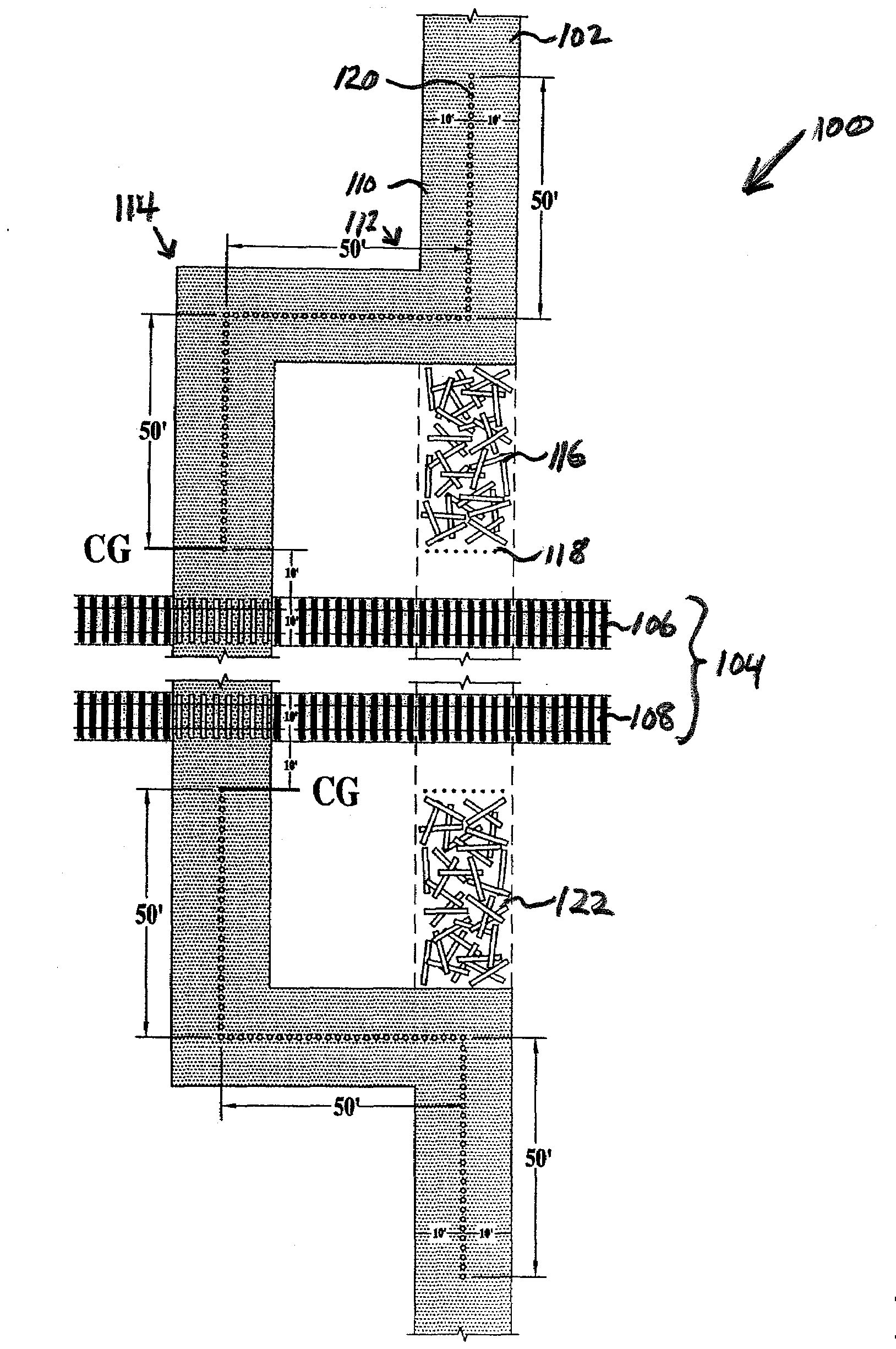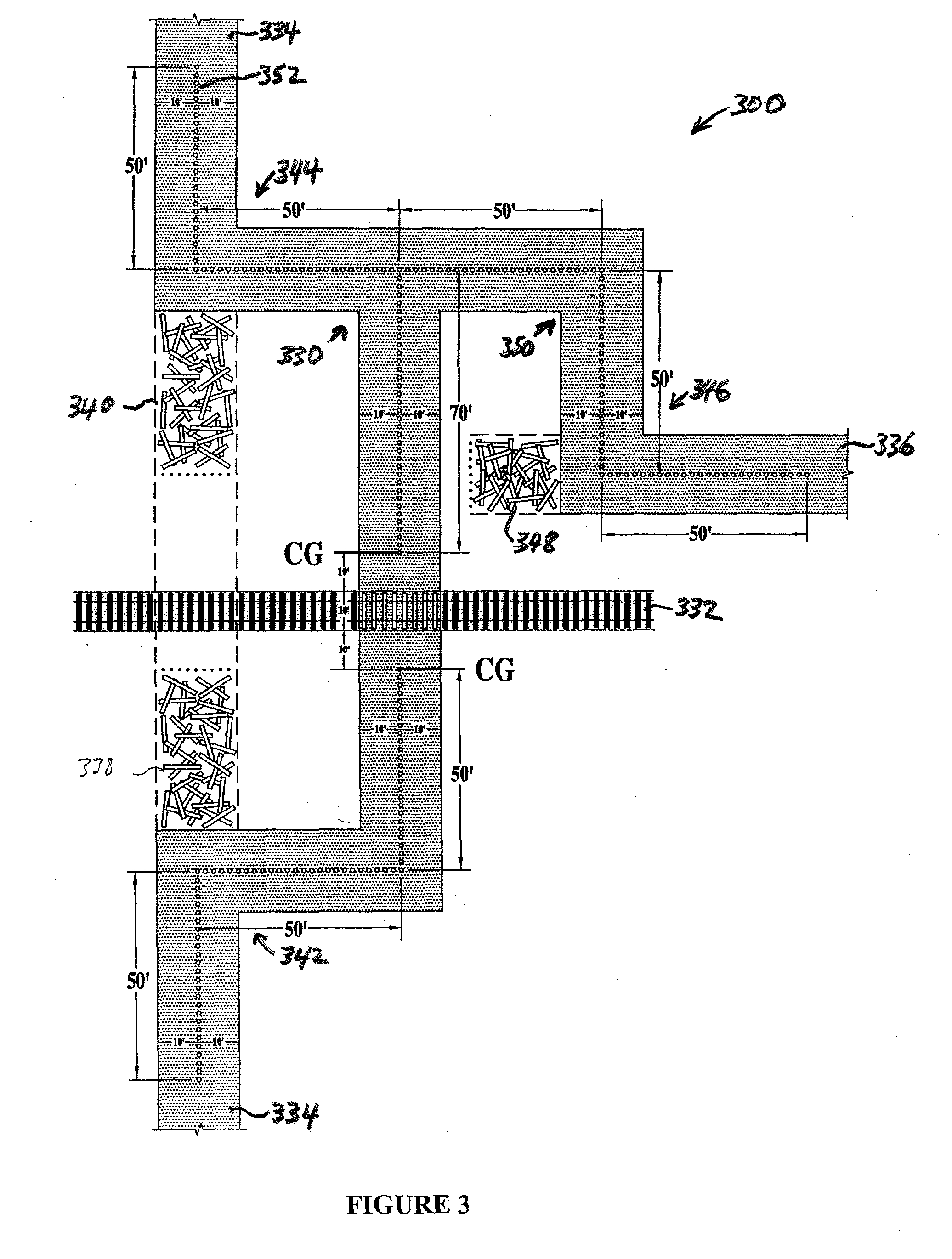Railroad Crossing
a technology for railroad crossings and crossings, applied in railway signalling and safety, railway traffic control, railways, etc., can solve the problems of little or no physical attenuation devices, provide passive barriers, and easy failure, and achieve gentleness, edge slope, and not create a hazard to traverse
- Summary
- Abstract
- Description
- Claims
- Application Information
AI Technical Summary
Benefits of technology
Problems solved by technology
Method used
Image
Examples
Embodiment Construction
[0013]FIG. 1 shows a railroad crossing 100 according to a first embodiment of the present invention. A road 102 extends in the vertical direction and crosses a railway 104 that extends in the horizontal direction. Two railroad tracks 106, 108 are shown comprising railway 104. In some cases there may be only one railroad track or there may be three or more railroad tracks comprising a railway at a railroad crossing. As a vehicle traveling along road 102 approaches railroad crossing 100 from either direction, it encounters a turn in the road. For example, a vehicle approaching along a first portion 110 of road 102 at the top of FIG. 1 encounters a change in road direction of ninety degrees at a first turn 112. This change in direction requires the vehicle to decelerate. Subsequently, a second turn 114 providing a second change in road direction is encountered. FIG. 1 shows second turn 114 providing a second ninety-degree change in direction. The second change in direction of second tu...
PUM
 Login to view more
Login to view more Abstract
Description
Claims
Application Information
 Login to view more
Login to view more - R&D Engineer
- R&D Manager
- IP Professional
- Industry Leading Data Capabilities
- Powerful AI technology
- Patent DNA Extraction
Browse by: Latest US Patents, China's latest patents, Technical Efficacy Thesaurus, Application Domain, Technology Topic.
© 2024 PatSnap. All rights reserved.Legal|Privacy policy|Modern Slavery Act Transparency Statement|Sitemap



